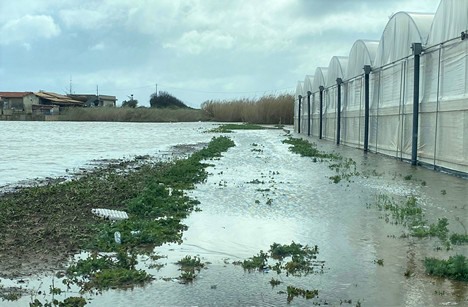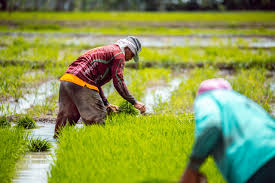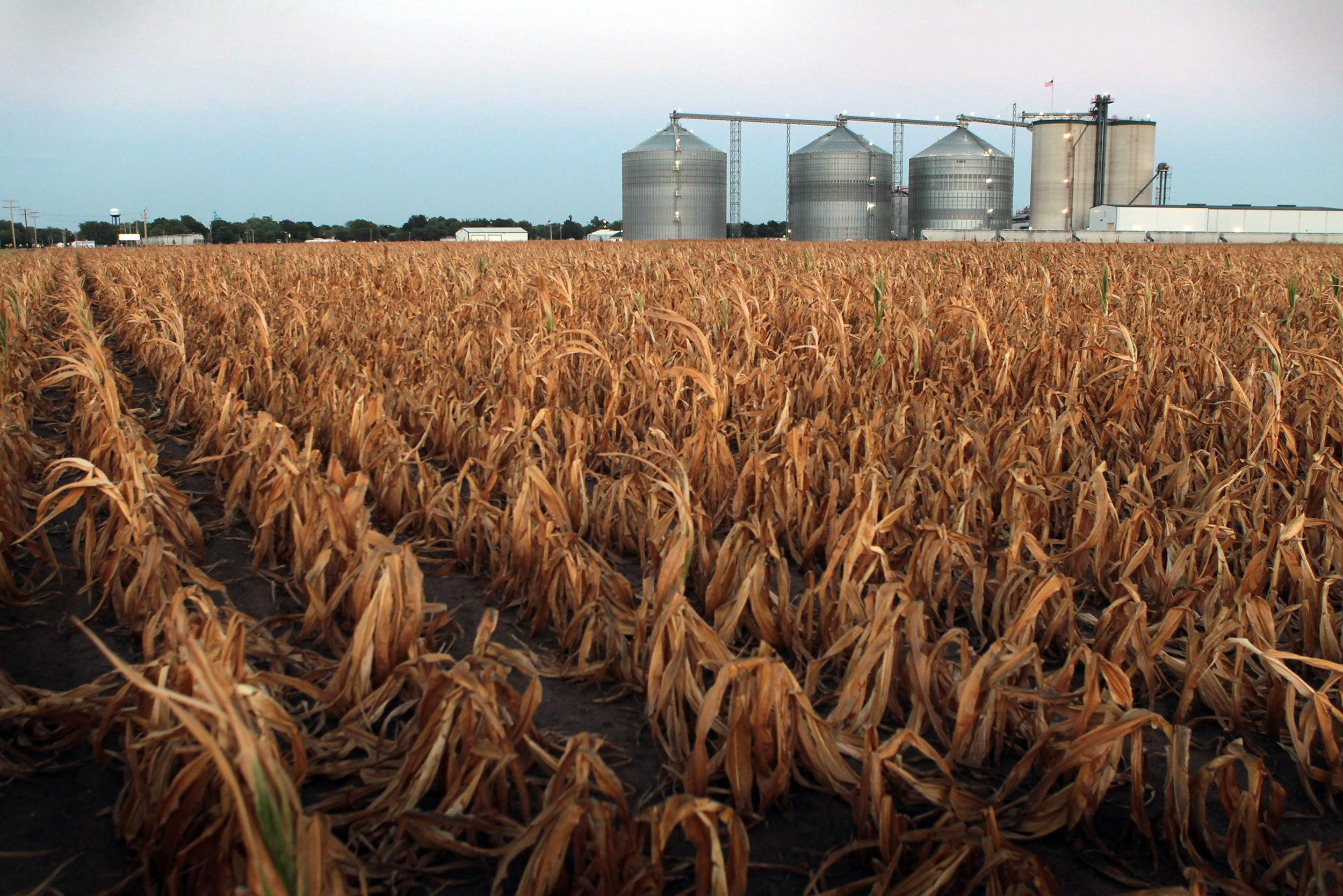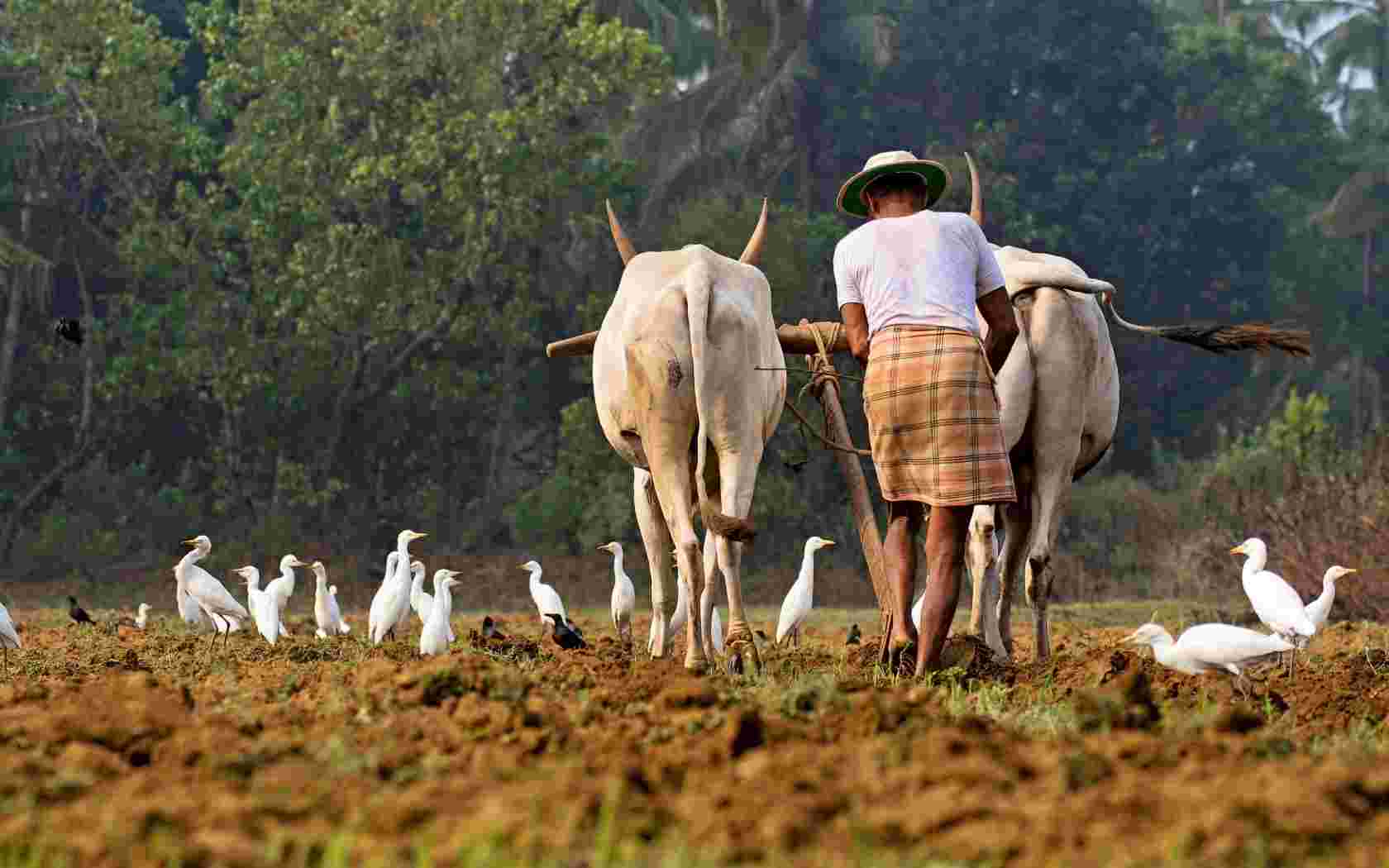Nepal - Agricultural insurance and microinsurance
13.02.2017 163 views
Nepal, a landlocked multiethnic, multilingual, multi-religious country, is situated in the Himalayan mountain region. The country can be divided broadly into three ecological zones: the lowland (17%), the midland (19%) and the mountain or highland (64%). In the midland and highland regions, the terrain is rugged, rainfall is low and the poor-quality soil is difficult to farm. Agricultural landholdings per household in these areas are the smallest in the country.
With a Gross Domestic Product (GDP) of NPR 1,599,172 million (per capita GDP NPR 60,119) and with 31% of the 26.6 million population of Nepal living below the poverty line, poverty still remains a major development problem in the country. The per capita GDP in the agricultural sector is even lower - approximately NPR 13,300 per agricultural worker. Over 30 per cent of Nepal’s population lives on less than NPR 1,330 per person per month. While the overall poverty rate in Nepal is 25 per cent, this figure increases to 46 per cent in the highland region and 45 per cent in the midland region. Poverty is much more severe in rural areas (35%) compared to the urban areas (10%).
The total number of households in Nepal is 5.7 million and an average household has 4.7 members. Poor rural people in Nepal generally have large families, very small landholdings or none at all, and high rates of illiteracy. Population density in the country varies according to altitude – averaging more than 1,000 persons per square kilometer (km2) in the Terai region, about 300 persons per km2 in midland region and as few as 30 persons per km2 in the highland region.
The Nepal’s economy is primarily agriculture based; about 80% of Nepal's population lives in rural areas and depend on subsistence farming for their livelihood. Nepal has 4.1 million hectare of agricultural land out of which 3.1 million hectare is under cultivation and 1.0 million hectare is uncultivated. About 80% of the rural population aged 15 and above is engaged in agriculture and 70% have holdings of less than one hectare; the holdings are too small to meet their subsistence requirements.
Nepal is a natural disaster hotspot, with hazards increasing over the past three decades. The disasters damage their properties, interrupt their livelihoods and cause severe losses. In the past 30 years there were 78 natural disasters affecting over 5 million people and causing nearly US$ 4.0 billion damages to their property and assets. The last 2 major earthquakes in 2015 (April and May) left a trail of damages totaling over US$ 2.0 billion and death toll of around 6,200. Notable events are floods (2004, 2007 and 2009), earthquakes (1980, 1988 and 2015) and draughts (2009).
Agricultural insurance and microinsurance landscape
The insurance sector in Nepal is governed by the Insurance Act 2049 B.S. (1992) and Insurance Regulation 2049 B.S. (1993). Beema Samiti (BS) is the insurance regulator. The Insurance Act and the Insurance Regulation require segregation of life and non-life businesses and they spell out various prudential norms, good governance standards and operating rules for insurance companies. In connection with agricultural insurance and microinsurance, Regulatory Framework Promotion of Pro-poor Insurance Markets in Asia (RFPI) has been working with BS since July 2013.
There are 26 private insurance companies (17 non-life, 8 life and 1 composite) and one state owned company (composite) in Nepal. Of the private non-life insurance companies, all 17 offer livestock insurance and crop insurance. The state owned insurance company, Rastriya Bima Sansthan, does not offer any agricultural insurance or microinsurance products. The reinsurers in Nepal (all foreign companies) do not provide any reinsurance facility. In absence of reinsurance, three groups of insurers have formed a risk pool amongst themselves to share the cost in the event of any catastrophic events.
Except for credit-life insurance initiated by MFIs and cooperative, the regulated insurers in Nepal do not offer any other microinsurance products at present. The main reason for this was the absence of microinsurance regulations until now. It is expected that the newly implemented Micro Insurance Directives 2071 and two life microinsurance products recently developed for them by BS will overcome this issue to a great extent.
2.1 Development of agricultural insurance
In January 2013, GoN introduced CLID to encourage insurance companies to develop commercial agricultural insurance. CLID makes it obligatory for all non-life insurance companies to offer agricultural insurance. It offers guidelines for product design but insurance companies are also free to submit their own schemes for approval by BS.
The livestock insurance under CLID covers cows, oxen, buffalos, yaks, sheep, goat, pig, chicken, swan and ducks, and the crop insurance covers bananas, coffee and tomatoes. BS has recently added bee, ostrich and mushroom in the list. For animals the premium payable is 5% of the sum assured. All risks are covered; in case of animals, 90% of the sum assured is paid in the event of death, and for permanent total disability, 50% of the sum assured is paid. Deaths not reported within three days, missing livestock and theft are excluded. For commercial birds the premium payable is 6% and for domestic birds it is 5%. Risks covered are fire, lightning, flood, inundation, landslide, subsidence, storm, hailstorm, snow, frost, illness and diseases. GoN pays 75% of the premium as subsidy. The subsidy was introduced in June 2013. Initially the subsidy was 50% and this was raised to 75% in August 2014. The maximum sum assured per person/entity for this subsidy program is NPR 10 million. GoN allocated NPR 135 million in the budget for subsidies in the fiscal year 2013-2014; however, its utilization is extremely low as the insurance companies are struggling to increase the outreach of agricultural insurance. The reasons for this are covered under challenges section.
The government owned Deposit Insurance and Credit Guarantee Corporation (DICGC) has been offering livestock insurance in the form of guarantee since 1987 to protect the loans of small borrowers of banks, FINGOs and SACCOs. DICGC is regulated by Nepal Rastra Bank, the central monetary authority. It charges 8% premium; 50 % of the premium is subsidised by GoN; this scheme is separate from that for insurance companies.
2.2 Development of microinsurance
In June 2010, BS drafted the Micro Insurance Act (Act) and forwarded it to the Ministry of Finance (MoF) for approval. The Act incorporated numerous prudential norms and corporate governance rules for microinsurance business. The Act also contained three major policy level changes – pension schemes, microinsurance and establishment of a reinsurance company. There were political instabilities in the country at that time and the Act was not approved by MoF. In March 2011, BS formed a committee to identify suitable microinsurance products and the best distribution channels to reach the low-income households in rural and urban areas. The committee recommended six microinsurance – agriculture, micro health, accident, self-employment, life with endowment and term life. In July 2012, BS developed a new draft Micro Insurance Regulation and forwarded it to MoF for approval. MoF did not approve it, and BS decided to regulate microinsurance through Directives in future.
In April 2014, BS completed the draft of the MID 2071 and submitted this to its Board of Directors for approval. This was approved in October 2014 and it is now operational as MID 2071. The directive lists six non-life and four life microinsurance products. MID covers both microinsurance and agricultural insurance. The issues relating to agricultural insurance have been discussed under Agricultural Insurance section above.
MID 2071 defines microinsurance, life microinsurance and non-life microinsurance; it identifies microinsurance products, caps the sum assured and the premium payable, states commission payable, claim settlement procedure and reporting requirements for the insurers. It also describes microinsurance agents’ qualifications, training and remuneration. One of the commendable features of MID is that it defines ‘microinsurance agent’ and under that allows NGOs, FINGOs, self-help groups and MFIs to act as microinsurance agent. Many of the above details are not given for Whole Life Micro Life Insurance product. MID 2071 makes it mandatory for every regulated insurer in Nepal to offer microinsurance. BS has developed a term life micro insurance and an endowment life micro insurance product for the insurers.
Gaps and challenges
Both CLID and MID covers agricultural insurance and there are discrepancies between coverage offered by them. MID only refers to livestock insurance and crop insurance, without mentioning which crops and which animals are covered; it might be misconstrued that it covers all crops and all animals. CLID goes in more details and specifies the crops and animals covered. MID does not mention whether it overrides CLID or both are applicable. Unless these issues are clarified immediately, it might give rise to confusions in the future.
3.1 Gaps and challenges in agricultural insurance
Commercial insurers are facing several challenges with agricultural insurance in Nepal. Moral hazard in agricultural insurance is very high and the cost of verifying a claim is very expensive. It is hard to determine whether the losses are due to factors outside of the farmer’s control or the farmer did not do his best to get a good harvest by using quality inputs like seeds and fertilisers, and appropriate timing of planting. The insurance companies have difficulties evaluating the risk attached to crop production.
There are other issues; accurate assessment of input cost for different crops, and crop losses in different regions are not readily available. Some of the terms and conditions imposed by BS, such as the insured perils, capping of the sum assured, capping of the commission etc. put a lot of restrictions on the insurers. Reinsurance companies operating in Nepal do not offer reinsurance coverage for agricultural insurance. Agricultural insurers, therefore, are finding it difficult to scale their business and are reluctant to enter this market in a big way as there might be a huge liability in the event of a natural disaster. Only 2 out of 16 non-life insurers are currently offering crop insurance and 12 are offering livestock insurance. The payout on crop insurance is on the basis of input cost, which is not considered to be a “value for money” proposition by the farmers; they prefer “yield basis” payout. A large number of farmers, especially the rice farmers, cannot afford the insurance premium. As a result, the demand for crop insurance is quite low amongst the farmers.
CLID itself is not sufficient to implement agricultural insurance. BS still needs to develop agricultural insurance rules and regulations. The directives need to be improved further for the effective implementation and monitoring of agricultural insurance. BS was set up to supervise commercial insurance industry; there is lack of agriculture insurance expertise at BS (actuary, statisticians, underwriters, risk analysts and loss assessors etc.).
Commercial insurers do not have distribution network in rural areas and therefore are facing difficulties in selling agricultural insurance to rural farmers. Communication to remote areas is expensive and time consuming.
Agricultural products vary from place to place. Also the risks attached to the products vary according to climate and topography. The current design of the products in CLID does not recognize these variations. The premium and the compensation packages designed in CLID are uniform throughout the country and need to be revised according to climate, area and topography.
There is no livestock accident and mortality policy or table for livestock deaths in the country. The risks covered under CLID are almost comprehensive coverage, making it very difficult for the insurers to comply with. Some of the risks covered are catastrophic risks, exposing the insurer to the possibility of a huge claim, which, in the absence of reinsurance facility, could financially damage the insurer.
Though the farmers are aware of the government scheme for crops and livestock, they find the schemes overwhelmingly complicated and difficult to understand. To solve this issue, the Ministry of Agricultural Development (MOAD) and the BS need to implement training and awareness raising program.
Though livestock insurance is not new in Nepal, it is a very new activity for private insurance companies. Before 2013, none of them were involved in this sector and they lack expertise in agricultural risk management. However, claims data and risk experience of DICGC are available for them and can be used to assess the risk involved in this sector. The insurers see livestock insurance as a more valuable product and easier to monitor than crops.
On the other hand, crop insurance is very new in the country; the industry and the farmers do not have previous experience to go by. Before CLID, a few MFIs, cooperatives and seed suppliers offered informal crop insurance in a very limited way. Crop insurance has not as yet made any appreciable inroad in Nepal. The two insurers that started offering crop insurance after CLID have less than 100 policyholders between them.
3.2 Gaps and challenges in microinsurance regulation
There are several gaps in the MID. It does not allow an individual to act as a MIA. This would prevent the insurance companies to employ their existing insurance agents to sell micro insurance. The MID also has not included “cooperatives” in the list of organisations allowed to be appointed as MIA. However, BS allows cooperatives to be appointed as MIA and has confirmed that it will continue doing so in the future.
MID, as it stands now, is not sufficient to implement microinsurance fully. BS still needs to develop microinsurance rules and regulations. The directive needs to be improved further for the effective implementation and monitoring of microinsurance. There is no obligation on commercial insurers to sell any minimum number of policies per year to socially backward and economically deprived rural community. The MID does not identify who is responsible for supervising the MIA. Under the existing regulations, BS is responsible for supervising the MIAs. In view of the large number of MIAs BS would be required to supervise under this provision and its human resources constraints, BS should make each insurance company responsible to supervise its own MIAs. The number of people to be covered under Health Family Micro Insurance is not identified. The expression “family“ is not defined. Details of sum assured, premium, commission, minimum and maximum age are not defined for the product “Whole Life Micro Life Insurance“. These gaps need to be dealt immediately otherwise it will only cause confusion in the market.
BS was set up to supervise commercial insurance industry; there is lack of microinsurance expertise at BS (actuary, statisticians, underwriters, risk analysts and loss assessors etc.). This should be addressed through extensive capacity building at BS.
Source - https://www.linkedin.com













